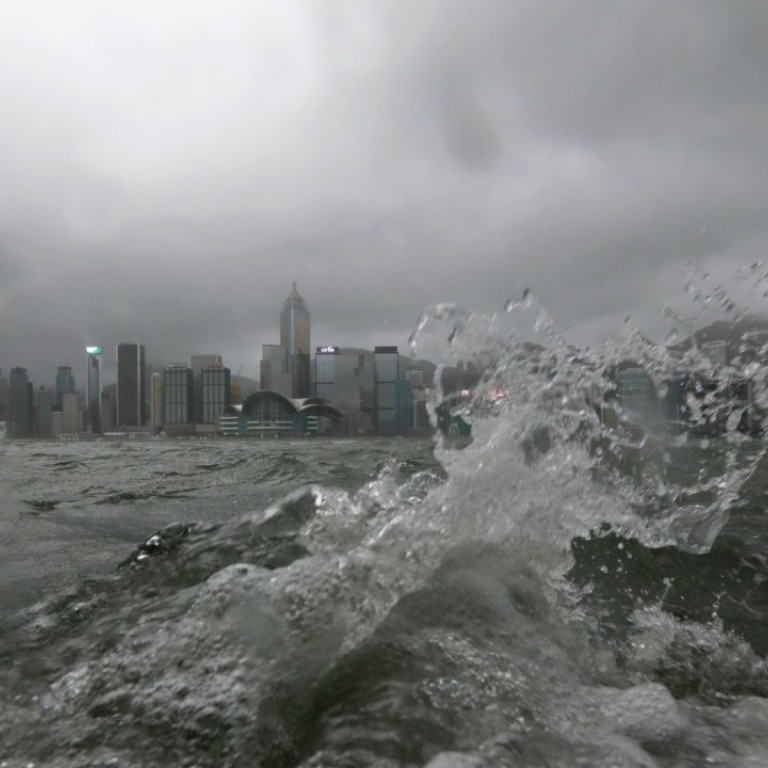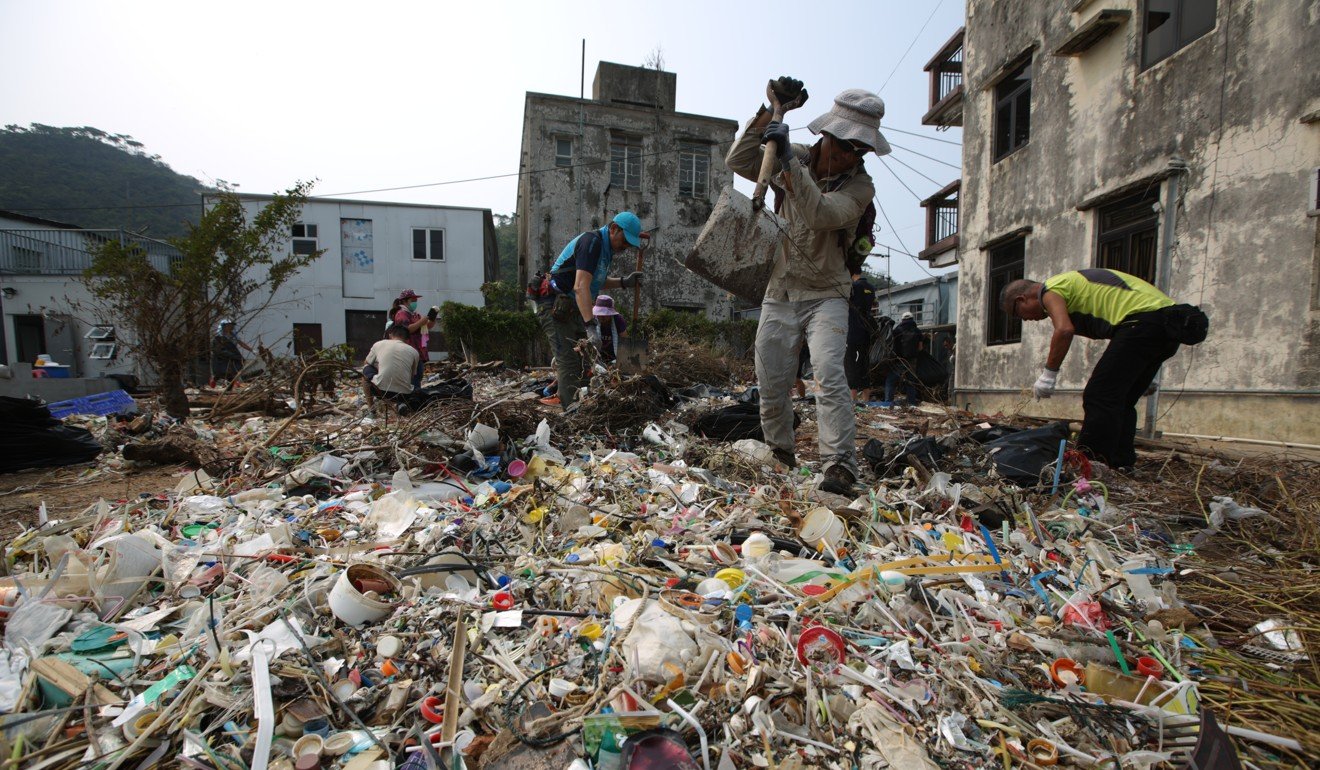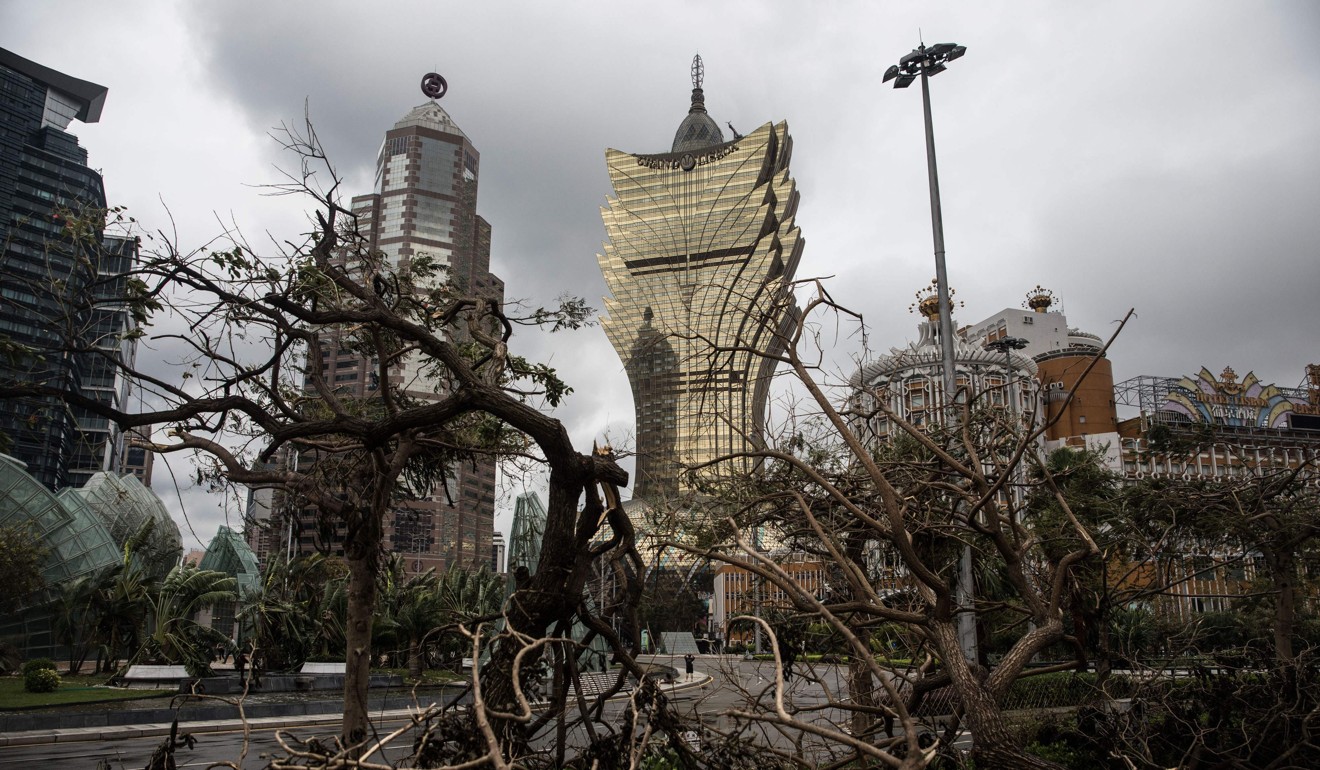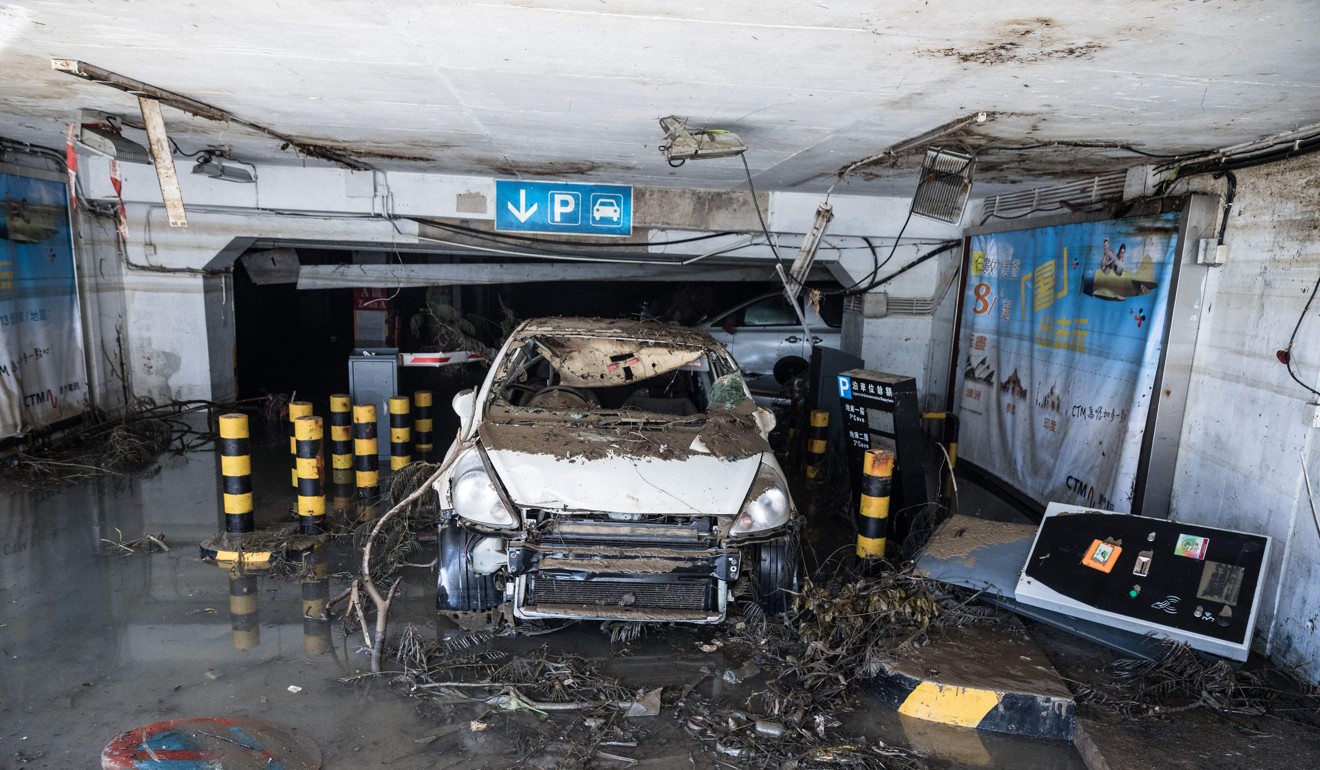
Bigger, badder typhoons and climate change – what’s the link?
Scientists suggest that extreme weather will be the “new normal of warming world”. Coastal cities like Hong Kong must be better prepared.
It has been a wild and wet 2017. As Typhoon Hato battered Hong Kong and Macau in August, grounding flights and killing 10 people, hurricanes Harvey, Irma and Maria unleashed hell on the Americas, causing hundreds of deaths.
Typhoons, hurricanes and cyclones are the same thing, but have different names depending on which ocean they form over.
They brew near the equator, where warm ocean water evaporates and forms clouds with areas of lower pressure below. The clouds and wind grow and spin faster into a whirling mass, and when wind speeds reach 118km/h, the storm becomes a typhoon.

Following Hato, the question is once again being raised: is climate change causing more typhoons and stronger typhoons?
There is no “simple” or conclusive answer to the question, atmospheric scientist Professor Johnny Chan Chung-leung said.
The simple way of looking at typhoons is that a warming of ocean waters leads to more evaporation into the atmosphere, which feeds typhoons and provides conditions to make them form more often. But atmospheric factors could also affect their formation, said Chan.
Sinking air in the upper atmosphere, for example, could put pressure on a typhoon and prevent it from rising and developing. Vertical wind shear at different heights of atmosphere could suppress convection or cause a typhoons cylindrical column to slant, diminishing its strength.
“Whether typhoons, under global warming, will become more frequent or strong, will depend on factors relating to both the ocean and the atmosphere. The problem however is that in terms of atmospheric conditions, no one can find evidence whether they are becoming less or more favourable.”
For one, scientists have been able to gather complete data on storms and measure their intensity only since the 1980s, when the technology for digital and infrared cameras improved.
Second, “if you look at statistics of typhoons that make landfall from 1998 onwards, the whole South China coast or South China Sea has seen fewer tropical cyclones, not more,” Chan, the director of Hong Kong City University’s Guy Carpenter Asia-Pacific Climate Impact Centre, pointed out.

In Hong Kong’s case, the city has actually seen fewer powerful typhoons of late.
According to the Hong Kong Observatory, there was roughly one No 10 typhoon – the strongest signal indicating hurricane winds of 118km/h or more – per year between 1960 and 1964, and one every four or five years from 1960 to 1980.
Typhoon York in 1999 bucked the trend, hitting the city 16 years after Typhoon Ella in 1983. Only two No 10 typhoon signals have been issued since then – Typhoon Vicente in 2012 and Typhoon Hato in August.

But what international scientists seem to agree on is this: global warming will make future extreme weather events, when they happen, more powerful, wreaking greater damage.
“So far, from our decades of research, there appear to be natural cycles in typhoon activity, regardless of activity or intensity. Climate change will modify these cycles,” Chan said.
United Nations Secretary-General António Guterres highlighted this during a recent trip to hurricane-ravaged Antigua, Barbuda and Dominica, where he said it was not possible to link a single weather event to climate change.
But he acknowledged that scientists were predicting that extreme weather events would be “the new normal of a warming world”.
He gave an example: “A warmer climate turbocharges the intensity of hurricanes. Instead of dissipating, they pick up fuel as they move across the ocean.”
What has Hong Kong done to tackle climate change? Next to nothing
The oceans are getting warmer due to the greenhouse effect, where gases in the atmosphere, such as water vapour, absorb heat radiated from the Earth to space and re-emit them in all directions. Oceans have a higher heat capacity than air and absorb 90 per cent of this extra heat.
International research already shows stronger typhoons making landfall in the northwest Pacific Ocean.
A 2016 study led by Professor Wei Mei of the University of North Carolina at Chapel Hill and published in the journal Nature Geoscience found that storms hitting China, Japan, Korea and the Philippines had grown 50 per cent stronger on average since 1977, largely due to the warming of oceans.
Watch: Macau struggles to recover after Typhoon Hato
Chan has recently been testing what he claims is a probable hypothesis – that global warming could be forcing tropical storms to migrate to latitudes further north.
To find out if his theory holds water, Chan is examining 500 years of data on China dating back to the Ming dynasty. He is also working with Korean and Japanese meteorologists to gather similar data to get the full picture.
Asia’s glaciers will melt sharply from global warming by century’s end: climate study
“If we find evidence that there have been south-to-north migrations of typhoons in the past, then it might not be because of global warming. But if it has never happened, we’ll be more confident in saying global warming [has had an impact],” Chan said.
Besides supercharging storms, the warmer climate feeds other elements that cause storms to do more damage, like massive flooding on land.
With more vapour in the atmosphere, rainfall, when it happens, is more intense. And the extra heat is melting arctic sea ice and glaciers, raising global sea levels by an average of 19cm from 1901 to 2015, or about 1.7mm per year.
Around Hong Kong, the rise in sea levels is projected to continue at a rate of 2.4 to 2.77mm per year, the Observatory said.

Observatory director Shun Chi-ming previously warned that rising sea levels, coupled with storm surges from tropical cyclones, would increase the chance of flooding in coastal areas.
The city got a taste of this during Hato. As the typhoon skirted the south of the city in August, the sea around parts of Hong Kong swelled up to 4.5 metres in height, inundating coastal and low-lying areas with a rare but powerful storm surge, flooding underground car parks and low-lying areas.
But the damage was much worse in Macau. Hato unleashed heavy rain and strong wind, leaving half of the city without water and electricity, claiming 10 lives and causing US$1.42 billion in economic losses.

Experts agree that Hong Kong must be better prepared for more extreme weather events. As a heavily-urbanised coastal city, where the population lives densely packed together, it is especially vulnerable to flooding from rising sea levels and increased rain.
Piet Dircke, global leader for water management at Dutch environmental and engineering consultancy Arcadis, said Hong Kong should think about building flood walls and multi-purpose dykes, using cheaper options for local areas, such as mangroves or sandbanks. It should also work with private developers with property near the water to share the cost of investing in such protection.

The city’s Secretary for Security John Lee Ka-chiu recently told lawmakers that the government had already formulated “contingency plans to cope with all types of natural disasters” and made regular reviews and revisions to ensure the preparedness of its departments and organisations.
He said that between 1961 and 2011, there had been about six tropical cyclones entering the 500km range of Hong Kong annually, with storm surges in Victoria Harbour that exceeded 3.5 metres happening on just three occasions in the post-war era, with the latest a result of Hato.

In her policy address in October, Chief Executive Carrie Lam Cheng Yuet-ngor said a government working group on climate change would focus on readying the city’s infrastructure to “enhance protection against extreme weather”. She did not give specific details but said this process would include a review of current design standards and the resilience of existing structures and updating them where necessary.
Dircke of Arcadis acknowledged that government investment in flood protection sometimes took a back seat as it cost billions, with no real quantifiable “return period”.
But there was simply no use in preparing for a rainy day only after catastrophe hit, he said.
“That’s exactly what happened in New Orleans, in New York and in Houston and many cases in Asia. Hong Kong should be smart and learn lessons from others.”
Illustration: Henry Wong

